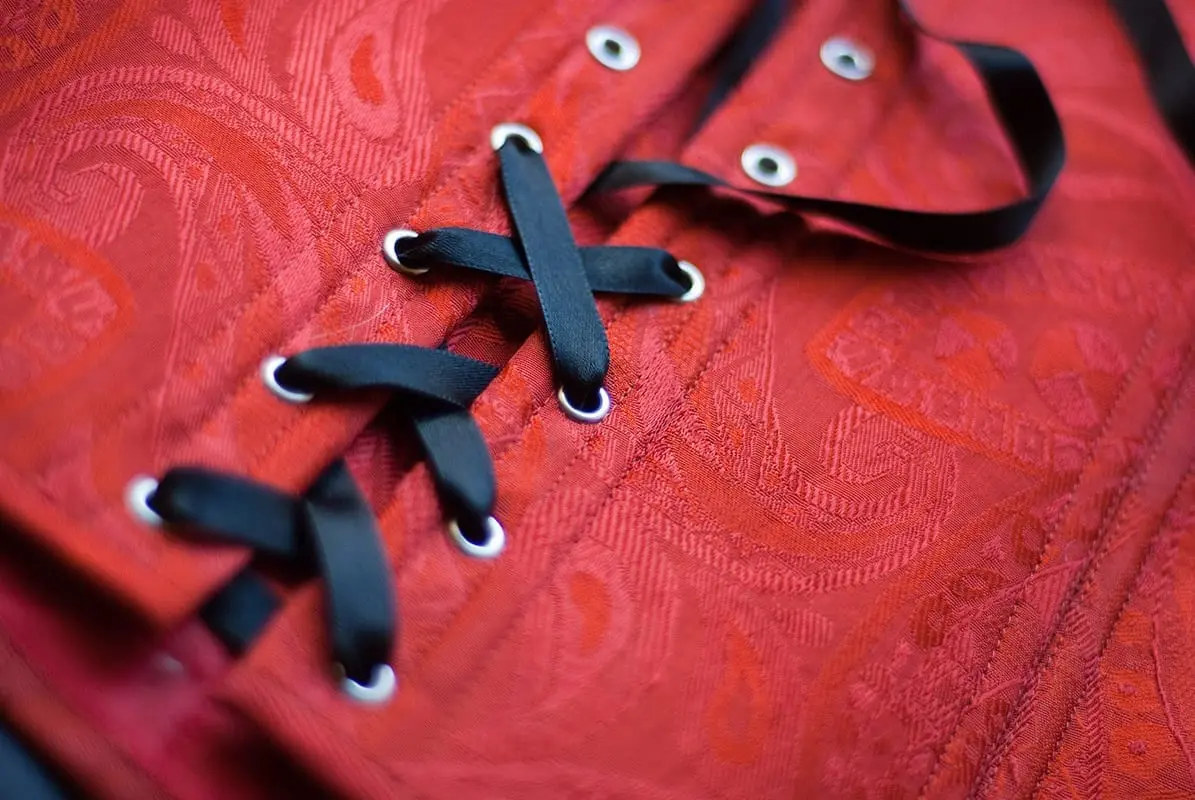
Get to know corsetry course tutor, Alison Campbell

Back in 2019 we were delighted to add a corsetry course to our ever growing roster of craft holidays and we recently took the chance to sit down with tutor Alison Campbell of Glasgow’s Crikey Aphrodite, to talk all things corsetry. Read on to find out a little bit about Alison and her love of this incredible art form!
How did you get first get into corsetry?
I always liked the look of corsets. I think it was Saturday night westerns and Sunday musicals that did it from my youngest. So I love that mix of 19th century with 1950s. I always drew costumes and dresses when I was little and it grew from there into a love of costume and history topped up with a bit of Rocky Horror and general fashion likes. After many years in graphic design stuck at a computer I desperately wanted to do something hands on. My mum spotted an ad for a corsetry course in the newspaper, I booked it to try it out and was hooked.
Has there been a particular project that taught you something unexpected?
Nearly every one. A standout though are a corset for a client with a stoma that really pushed my problem solving and pushed me into looking at how nursing and maternity corsets were made a century ago to get ideas for a practical solution.
What project are you most proud of and why?
A wonderful bridal outfit for a client getting married at Edinburgh castle. Sometimes client vision and your own really get in sync and if they have the budget and the willingness to work with you then it’s good. This one was a huge silk skirt, full bust corset and veil. It was great fun to make.
Who or what are your biggest inspirations?
Undoubtedly Mr Pearl, whom I’ve been lucky enough to have spent some time with. His creations for the most well known names in fashion are just astounding. Are as his pieces for clients such as Dita Von Teese.
Do you have any favourite techniques that crop up again and again in your work?
I work a lot with full busted women as I work as a bra fitter too. This means some specific techniques to get the shape, support and comfort right. I use gores a lot, additional stiffening and extra boning.
What would you say are some common misconceptions surrounding corsetry?
There are so, so many. That they’re uncomfortable, that Victorians had ribs removed, that everyone in the past tightlaced, that you can’t move/breath/work in one. All utter nonsense, which I’ll be delighted to explain to anyone who will listen in more detail of course!
What would you say drew you to teaching corsetry courses?
I taught a corsetry course at a friend’s studio in the south of England. I discovered I enjoyed it more than I anticipated (never being one for standing up in front of groups) and that it’s incredibly rewarding passing on skills and seeing students develop.
What would you say to someone curious about trying corsetry for the first time? What should they know before getting started?
To be aware of accuracy, as tiny increases or decreases make big fit differences. And patience, as there are a lot of steps to making a corset. However that appealed to me as I have a short attention span and with a corset you’re always moving on to a different step/task. Also use quality materials. There’s no point spending hours making something if the materials won’t hold up past one wear. Other than that, if you can sew a line and follow a pattern you’re all set.
And there you have it! Thank you again to Alison for talking to us and we can’t wait to see what kind of magic comes out of her next corsetry course.
For more information on Gartmore House’s corsetry course visit the course page or contact the team directly.
m: mail@gartmorehouse.com
t: 01877382991




